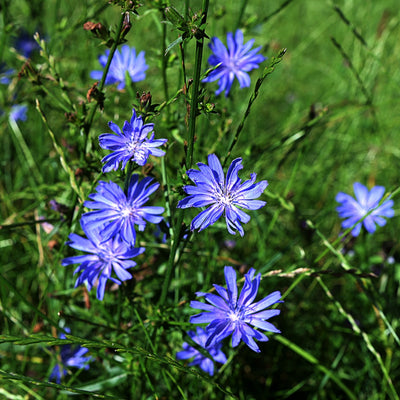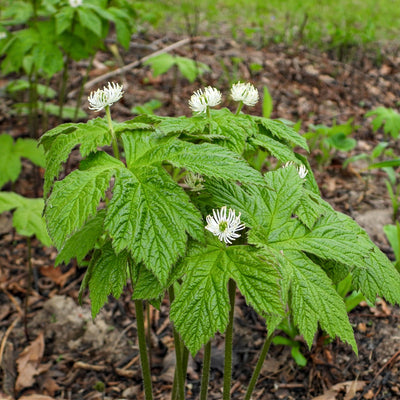When you use these superb watering techniques specific to your plants' needs, growing a healthy garden is much simpler. That way, even when the weather changes, your garden will stay green and strong. Simple watering schedules help plants grow thicker roots that can better withstand heat or dry periods.
Also, native and annual plants are best for a garden that will last. These plants get used to the land on their own, so they don't need as much water or care. When you plant oak, milkweed, and partridgeberry together, you balance the soil and make it a good place for pollinators like butterflies to live. This keeps the plant healthy and full of life.
Plants that come back every year save you time and work. They start a natural loop that keeps the earth healthy and your plant strong. They also sell plants like the Chicory Plant and the Goldenseal Plant that you could add. There are many types of yards that these plants would look good in. When everything works together, your garden will be strong and simple to take care of.
Popular Ways to Water Your Plants to Try
Deep Watering
When you water deeply, water reaches the lower layers of soil. On hot days, this keeps the roots strong and steady. It helps to have a better watering schedule for plants without having to be watered every day. When you water deeply, the roots get stronger over time, which is good for plants, flowers, and young trees.
Drip Irrigation
Drip systems slowly add water to the base of plants. This reduces waste and keeps the soil properly moist. It's liked by many farmers because it saves time and keeps leaf diseases at bay. It also works well in small yard areas and veggie beds.
Soaker Hoses
Along their length, these lines evenly let water out. They work great for flower beds that dry out quickly or long rows of plants. Soaker hoses help you keep up with easy tasks and keep plants from getting stressed out when it's hot outside.
Improved Lawn Methods
With better lawn watering techniques, the soil can fully absorb the water. If you water the yard slowly, it will stay green for longer. So, water doesn't run off, and the grass stays flat when it gets hot.
Smart Moisture Tools
Sensors are now used to water plants in the modern world. These sensor-based watering solutions check how wet the soil is and only add water when they need to. This saves water and keeps plants from dying. Smart tools in the yard help people who are busy but still want their plants to grow well without having to do more work.
Watering for Plant Resilience
When you take good care of plants, they get strong. Plants get stronger when you take good care of them. When you use the right water techniques, their roots stay healthy and grow deeper into the ground. When it's hot and dry, this helps plants stay alive.
Having a regular schedule also helps with long-term health. Good watering schedules keep the soil wet but do not drown the roots.
It is easy for roots to get water from the ground below as they grow deeper. As a result, they will not need your care as often. For native plants like milkweed and long-lasting plants like partridgeberry, the soil should stay fairly wet.
If you water the Chicory Plant and the Goldenseal Plant in an easy pattern, they will also grow well. When the earth stays level, they can better handle changing weather. Over time, these plants get stronger on their own and need fewer fixes.
It's also important to have healthy dirt. When water reaches the lower soil layers, it improves soil structure and helps good bacteria grow. These bugs help plants stay healthy when they are stressed.
To make a garden that lasts through the seasons, you need to stick to a schedule, water deeply, and pick the right plants.
Common Watering Mistakes and How to Avoid Them
1. Using too much water
Many farmers think that giving plants more water will make them healthy, but too much water can hurt the roots. The earth gets heavy and lacks air. Setting up a simple watering schedule for plants that lets the soil dry out a bit between watering days is a better idea. This keeps the roots alive and stops too much water from turning the leaves yellow or slowing down growth.
2. Watering during the day
When you water when the sun is at its hottest, the water evaporates quickly. What you give plants isn't very much. Because the earth soaks up water slowly and deeply, early morning is the best time. Because the grass has time to dry before nightfall, which lowers the risk of fungus problems, this practice also supports better lawn watering techniques.
3. Watering Too Little
When you water for a short time, you only wet the top layer of dirt. This makes the roots weak because they can't get water on dry days. The water can get deeper into the earth when the sessions are longer. This makes the roots of plants stronger. This is also very helpful for lawns, where more water helps plants grow steadily and the grass stay green longer.
4. Ignoring the type of soil
Soils that are sandy drain quickly, while soils that are clay stay wet for longer. Should you forget about the type of dirt, you might water too much or too little. If you know about your land, you can make better plans for your habit. Changing how much and when you water plants makes them easier to take care of, especially in parks with a mix of plant types.
5. Not going with the flow of the weather
When it rains a lot, plants need more water than when it's very dry. A lot of farmers forget to change their habit, which wastes water or makes plants stressed. Tracking moisture levels is easier when you use simple tools or sensor-based watering solutions. This way, plants get just what they need without being stressed out or overworked.
6. Putting water on leaves instead of soil
Fungus, rot, and bug problems can happen if you spray leaves instead of the dirt. Roots, not leaves, are what plants use to take in water. Putting water on the earth makes it absorb it better and lowers the risk of disease. It also saves you time when you're watering, especially when you're taking care of veggies and flowers.
7. Giving all plants the same care
Take care of each plant in its own way. Some plants like more water, while local plants usually need less. The best plan is one that is easy to change. Check what each plant needs and change how you do things. This keeps the roots from getting stressed and helps plants grow better all year long.
8. Watering the lawn quickly
Lawns get wet quickly, which makes water run off. Watering slowly helps the water get to the soil's lower layers. This method helps grass roots grow strong and keeps it healthy for longer. Grass can handle more heat and foot traffic when it soaks up all of its water.
FAQs:
What is the best watering schedule for plants?
When you water deeply once or twice a week, most plants do well. Before you go again, let the top dirt dry out.
What are the three rules of watering?
It's best to water heavily in the morning and not on the leaves.
How many minutes should you water your lawn?
Based on the type of soil, most gardens need 20 to 30 minutes per zone.
Is it best to water a lawn every day?
Not at all. Watering every day makes roots shallow. Watering plants a few times a week is better for them.
Is drip irrigation better than hand watering?
Yes. Water is saved, less waste is made, and the land stays properly moist with drip watering.



